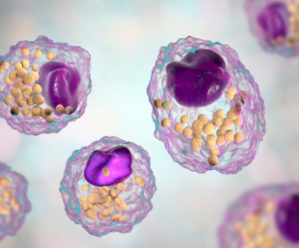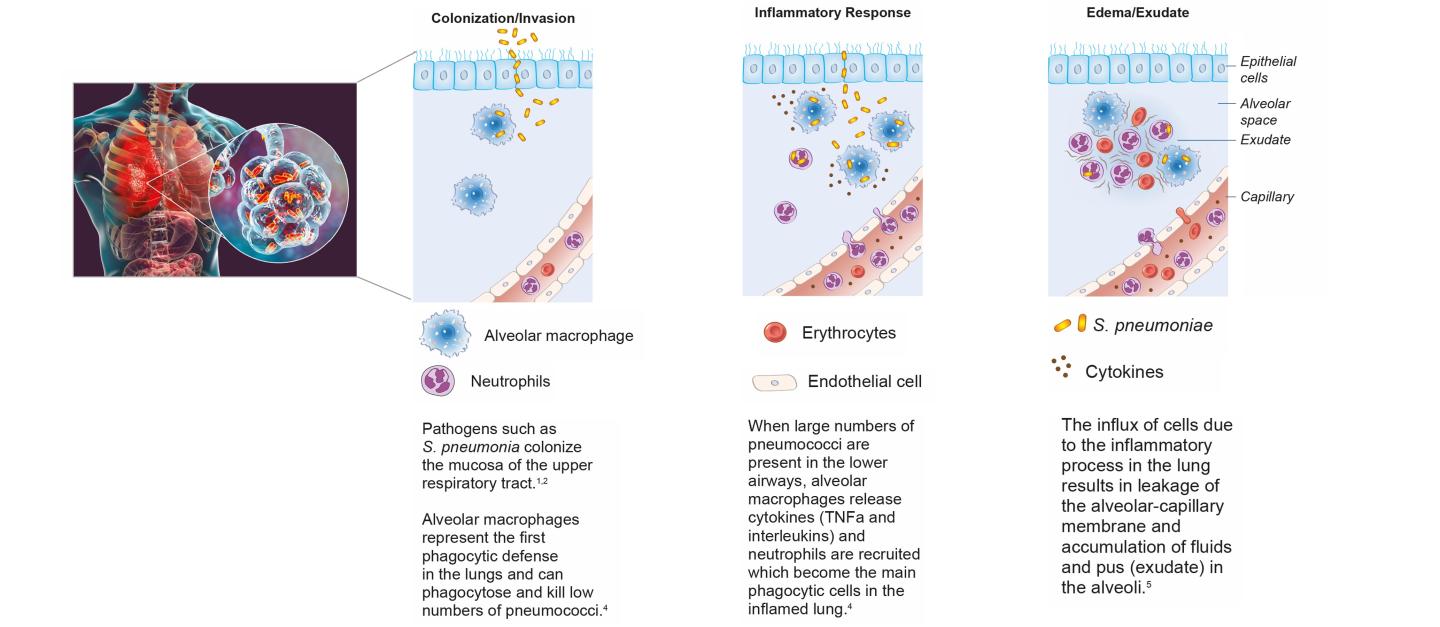CAP is an infectious process resulting from the invasion and overgrowth of microbial pathogens in lung parenchyma that overcome host defenses and provoke alveolar inflammation. CAP is characterized by complex host-pathogen interactions, which determine the extent of infection and tissue damage.1,2
CAP is commonly caused by the micro-aspiration of contaminated secretions containing infectious bacteria from the upper respiratory tract.1,2 The epithelium provides a physical barrier to infection and expresses antimicrobial peptides to kill extracellular bacteria.2 Invasive bacterial species such as Streptococcus pneumoniae can enter the body via breathing and colonize the mucosa of the upper respiratory tract.1,2
The presence of bacteria in the lower airways triggers an immune response resulting in inflammation of and accumulation of fluids and pus in the alveoli and inflammation of the alveolar walls and bronchioles.1-3 The consequences of this damage are the symptoms of pneumonia, such as shortness of breath and chest pain.3 Based on the area of the lung involved, pneumonia can be classified histologically into lobular, lobar, bronchopneumonia, or interstitial.3

